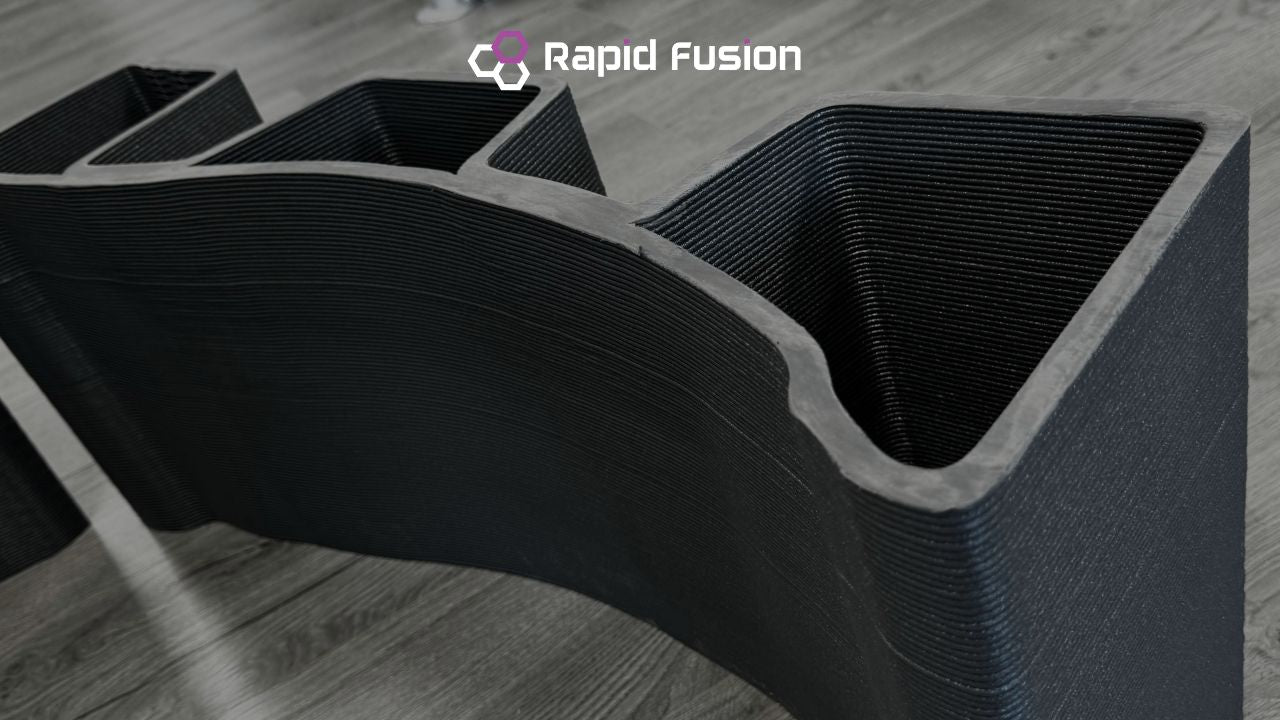Large-format robot 3D printing is at the forefront of innovation in construction, revolutionising how complex concrete molds are designed and produced. 3D printing molds for concrete has unlocked unprecedented design freedom, reduced costs, and brought sustainability to a traditionally labor-intensive industry.
Why Use 3D Printing for Concrete Molds?
Creating concrete molds for complex geometries using traditional methods requires significant skilled labor, time, and material resources. With 3D printing, molds can be created much faster, with less waste, and at a fraction of the cost. This technology allows for the production of molds that are near-net shape, meaning they only need minimal finishing (such as CNCing off 4-6mm of material) to achieve the final quality. This method is not only efficient but also environmentally friendly, saving both labor and materials.

Key Advantages of Large-Format 3D Printing for Concrete Molds
- Time Savings: Traditional mold-making methods can take weeks or even months to produce. With large-format 3D printing, a mold can be made in just a few days, significantly speeding up the overall construction timeline.
- Material Efficiency: The molds are printed using recycled PET-G plastic, which can be sourced locally. PET-G is heat-resistant, making it suitable for high-demand construction projects, and the material can be reused or recycled at the end of its life, unlike traditional composite molds which are often not recyclable.
- Sustainability: By using recycled materials and minimising waste, the carbon footprint of mold production is drastically reduced. This also means fewer molds need to be shipped globally, as many traditional molds are manufactured in low-cost labor countries like China and transported across the world, adding to carbon emissions.

Complex Geometries Made Easy
With traditional methods, designing complex geometries for concrete molds would typically be cost-prohibitive due to the labor required to produce them. Large-format 3D printing, however, removes this limitation. The technology allows for fast design iterations and precise execution of intricate designs. The ability to print large parts and then bolt them together for massive projects expands possibilities for architects and engineers, enabling them to explore new frontiers of creativity.
Increased Design Freedom
One of the most exciting aspects of using 3D printing for concrete molds is that designers are no longer constrained by the need to simplify designs to reduce costs. A robot doesn't care how many curves or intricate details are in the design—complex shapes are no longer a cost-prohibitive challenge. This means that better-designed buildings, with more architectural innovation, can become a reality.

The Future of Large-Format 3D Printing in Construction
As the technology continues to evolve, we anticipate widespread adoption of large-format 3D printing in the construction industry. The more the industry innovates, the lower the entry costs will become. In the future, this technology will empower more designers and architects to create highly complex, sustainable, and aesthetically superior structures, at a fraction of the current costs.
By combining speed, precision, sustainability, and cost savings, large-format 3D printing is poised to redefine how we think about building and construction. And as these technologies become more accessible, we can look forward to seeing more innovative, better-designed buildings in the world.



